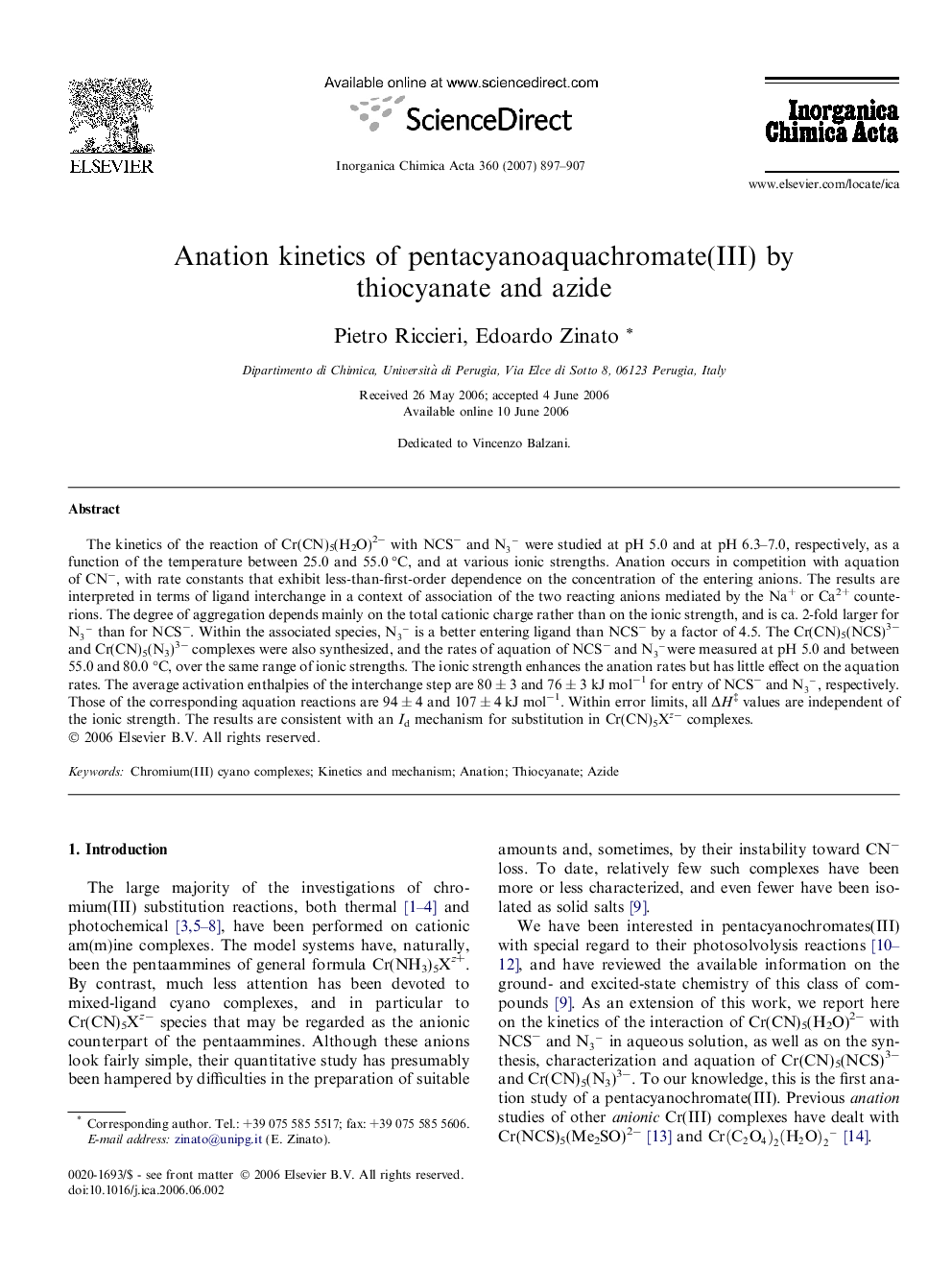| کد مقاله | کد نشریه | سال انتشار | مقاله انگلیسی | نسخه تمام متن |
|---|---|---|---|---|
| 1312766 | 975497 | 2007 | 11 صفحه PDF | دانلود رایگان |

The kinetics of the reaction of Cr(CN)5(H2O)2− with NCS− and N3- were studied at pH 5.0 and at pH 6.3–7.0, respectively, as a function of the temperature between 25.0 and 55.0 °C, and at various ionic strengths. Anation occurs in competition with aquation of CN−, with rate constants that exhibit less-than-first-order dependence on the concentration of the entering anions. The results are interpreted in terms of ligand interchange in a context of association of the two reacting anions mediated by the Na+ or Ca2+ counterions. The degree of aggregation depends mainly on the total cationic charge rather than on the ionic strength, and is ca. 2-fold larger for N3- than for NCS−. Within the associated species, N3- is a better entering ligand than NCS− by a factor of 4.5. The Cr(CN)5(NCS)3− and Cr(CN)5(N3)3− complexes were also synthesized, and the rates of aquation of NCS− and N3-were measured at pH 5.0 and between 55.0 and 80.0 °C, over the same range of ionic strengths. The ionic strength enhances the anation rates but has little effect on the aquation rates. The average activation enthalpies of the interchange step are 80 ± 3 and 76 ± 3 kJ mol−1 for entry of NCS− and N3-, respectively. Those of the corresponding aquation reactions are 94 ± 4 and 107 ± 4 kJ mol−1. Within error limits, all ΔH‡ values are independent of the ionic strength. The results are consistent with an Id mechanism for substitution in Cr(CN)5Xz− complexes.
In weakly acid solution at high ionic strengths, X− = NCS− or N3- replace H2O of Cr(CN)5(H2O)2− in competition with loss of CN−. The reaction is reversible, as the two newly synthesized Cr(CN)5X3− complexes undergo aquation of the N-coordinated ligands. Anation is exothermic and is more sensitive to the ionic strength than aquation. An Id-type mechanism is proposed involving the enhancement of anion association by the cationic charges.Figure optionsDownload as PowerPoint slide
Journal: Inorganica Chimica Acta - Volume 360, Issue 3, 15 February 2007, Pages 897–907